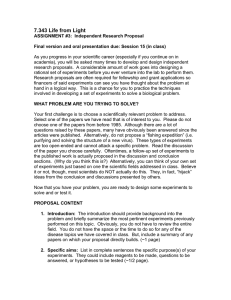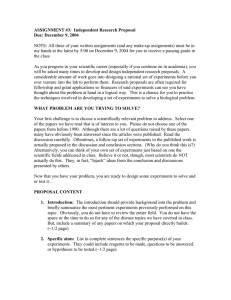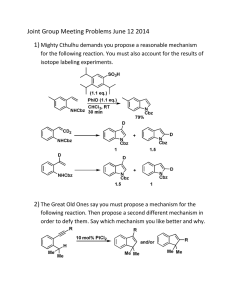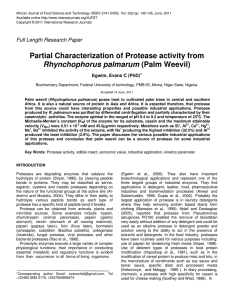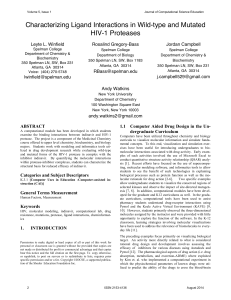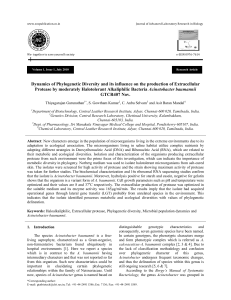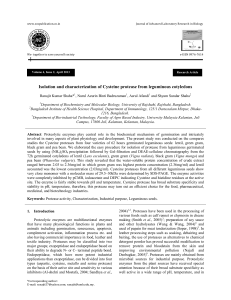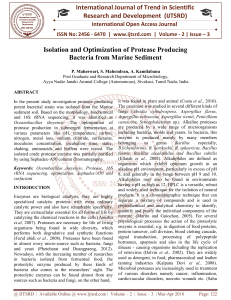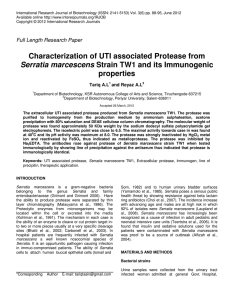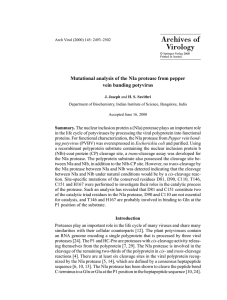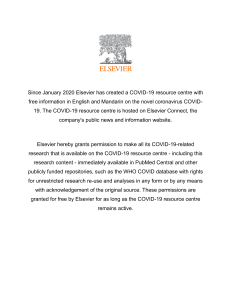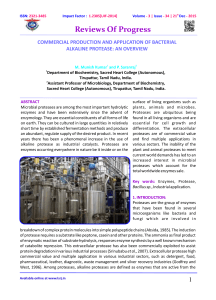ASSIGNMENT #3: Independent Research Proposal
advertisement
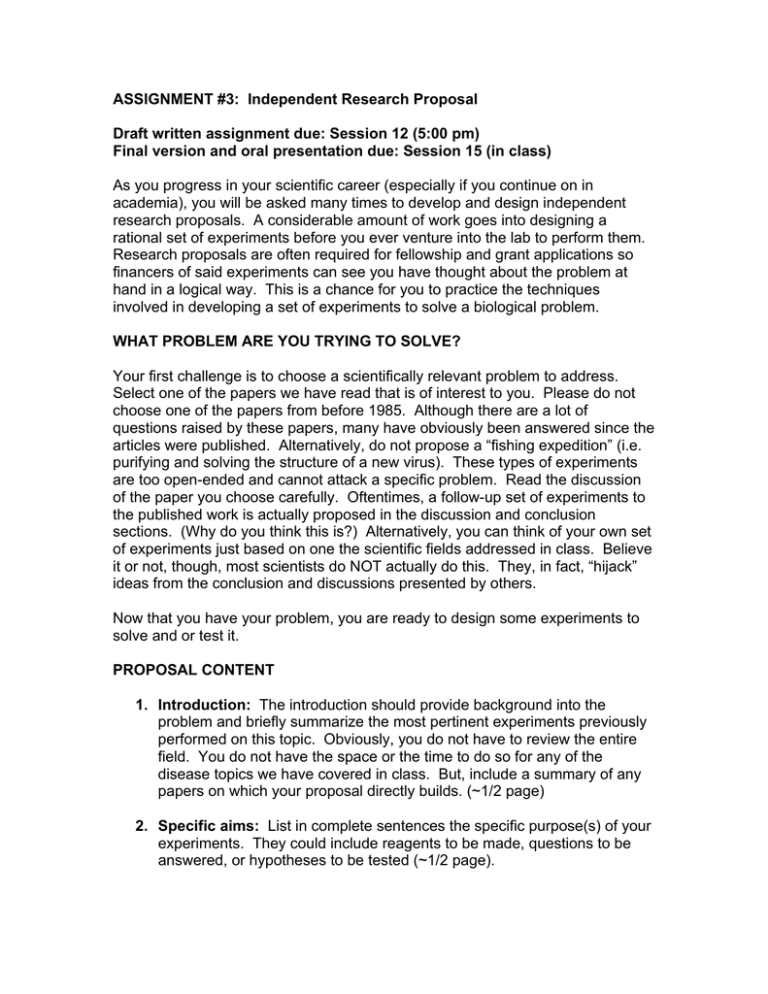
ASSIGNMENT #3: Independent Research Proposal Draft written assignment due: Session 12 (5:00 pm) Final version and oral presentation due: Session 15 (in class) As you progress in your scientific career (especially if you continue on in academia), you will be asked many times to develop and design independent research proposals. A considerable amount of work goes into designing a rational set of experiments before you ever venture into the lab to perform them. Research proposals are often required for fellowship and grant applications so financers of said experiments can see you have thought about the problem at hand in a logical way. This is a chance for you to practice the techniques involved in developing a set of experiments to solve a biological problem. WHAT PROBLEM ARE YOU TRYING TO SOLVE? Your first challenge is to choose a scientifically relevant problem to address. Select one of the papers we have read that is of interest to you. Please do not choose one of the papers from before 1985. Although there are a lot of questions raised by these papers, many have obviously been answered since the articles were published. Alternatively, do not propose a “fishing expedition” (i.e. purifying and solving the structure of a new virus). These types of experiments are too open-ended and cannot attack a specific problem. Read the discussion of the paper you choose carefully. Oftentimes, a follow-up set of experiments to the published work is actually proposed in the discussion and conclusion sections. (Why do you think this is?) Alternatively, you can think of your own set of experiments just based on one the scientific fields addressed in class. Believe it or not, though, most scientists do NOT actually do this. They, in fact, “hijack” ideas from the conclusion and discussions presented by others. Now that you have your problem, you are ready to design some experiments to solve and or test it. PROPOSAL CONTENT 1. Introduction: The introduction should provide background into the problem and briefly summarize the most pertinent experiments previously performed on this topic. Obviously, you do not have to review the entire field. You do not have the space or the time to do so for any of the disease topics we have covered in class. But, include a summary of any papers on which your proposal directly builds. (~1/2 page) 2. Specific aims: List in complete sentences the specific purpose(s) of your experiments. They could include reagents to be made, questions to be answered, or hypotheses to be tested (~1/2 page). 3. Experiments and Expected Results: In this section, you should describe all the experiments you plan to perform to test your hypothesis. Try to be as detailed as possible without getting into specifics that you cannot predict. For example, if your experiments test a new protein using the techniques described by the Prusiner lab, you could simply say, “Degradation of Protein X will be analyzed by protease K digestion using the conditions described by Prusiner et al. 1984. If protein X is determined to be resistant to protease K hydrolysis under these conditions, other physiologically relevant buffers will be tested.” Be sure explain why you chose the experiments you did and how they would answer your original question. In this section, also predict possible outcomes of your experiments. Also describe how you would explain results that were different from those you predict in your original hypothesis. (~1-1 ½ pages). 4. Discussions and Conclusions: Briefly summarize the purpose for your set of experiments. Be sure to connect your outcome to the field as a whole and make predictions as to where your result will lead scientific progress in this research area. WRITTEN SUBMISSION GUIDELINES 1. 2. 3. 4. Avoid stylistic writing that expresses thoughts and feelings. Unfortunately, as scientists, we are encouraged to be stoic and not to express our opinions unless in reference to future directions of experimental work. Do not use “I” or “we”. Although pronouns are beginning to resurface as an acceptable form of scientific communication, they encourage the inclusion of feelings or thoughts which are not appropriate to describe solid experiments. Your proposal write-up should consist of 2-3 pages (single spaced). You can include diagrams, but it is not a requirement and they should be included in addition to your page requirement. Your written submission must include references. You did not invent the techniques you are describing yourself! You must reference a paper in which the technique is used similarly or at least a text book chapter describing it. You may use any acceptable scientific format that includes article titles, author names, journal title, volume, year, and page numbers. ORAL PRESENTATION GUIDELINES 1. You will be given 20 minutes total for your talk. Your presentation should only be 15 minutes long and we will leave about 3 to 5 minutes open for questions. We will keep track of time, so try to stay within the allowed length. 2. Introduce your proposal by providing some information as to what was known about the topic before now. This usually will involve providing information about the person(s) primarily responsible for the original data and references to the original papers. 3. Explain in detail what you are proposing and how this is going to solve an unanswered question in the virus structure and assembly field. In most cases this will involve the use of diagram and sketches. You should be very specific about the experimental procedure you propose to use! Using hand-outs or the board in the classroom is usually sufficient, but you may use a computer or overhead projector if you prefer. If you will need a computer or an overhead projector, please tell me in advance so I may make the necessary arrangements before class! Your description of the method should be at a very basic level. Remember that you are the expert in the class on this method and the presentation should be geared to an audience of novices on the subject. As always, you should feel free to contact us with any question or concerns you may have.
